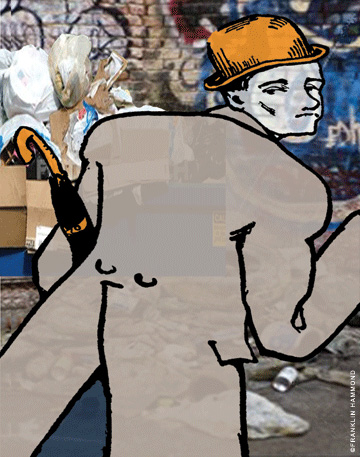
At first, it wasn’t even a recession. The National Bureau of Economic Research waited until last December to officially pronounce the ailment that had been bleeding Main Street and Wall Street for months. Then that diagnosis came under scrutiny. Was recession the right word, or did depression come closer to the mark? In mid-February, Nobel Prize-winning economist and New York Times columnist Paul Krugman came to Irvine Auditorium to give his take in the 2009 Goldstone Forum address. Krugman told an overflowing hall that the current crisis is a different beast from the inflation-driven pains of 1981 and ’82. It’s a “debt deflation” recession that bears more resemblance to the 1930s, he argued—except that the banks at the center of our current problems weren’t, well, actual banks. Here is a slightly abridged passage from his talk.
It turns out that most banking in America in 2007 was not carried out by banks. Most banking in America was carried out by things that were doing bank-like activities, but were not actually called banks, were not regulated like banks, were not guaranteed like banks, and were therefore extremely vulnerable. So although we thought nothing like the bank runs of the 1930s could happen in the modern world, in fact they could and they did. One way to look at what’s happened over the past year and a half is that we have actually had a wave of bank runs sprawling across America. Now, the bank runs don’t look like the old-fashioned bank runs. There aren’t mobs of people in the street pounding on the doors. There are mobs of people sitting in front of their computers clicking their mouses. But the effects are in many ways the same: a collapse of liquidity, a collapse of lending, a sharp rise in the price any risky borrower has to pay for money—if he or she can borrow money at all. So it’s really been a banking crisis very much like that of the 1930s.
A major aspect of what happened in the ’30s, and actually also what happened to Japan in the ’90s, was a process that was described 75 years ago by the great American economist Irving Fisher. Fisher talked about “debt deflation.” He was thinking at the overall level of crisis, but it actually works pretty much the same way even if it’s just a bunch of asset crises. Imagine that the price of everything falls by 25 percent, as it did in the early 1930s. There are a lot of people owing money to other people, a lot of people have debts, and those debts are worth more—the real debts have increased. Now of course there are two sides to that transaction, so the borrower owes more but the lender has a bigger claim. You might think that’s a wash, but it’s not. The borrowers are typically more constrained—more in trouble in terms of cash—than the lenders are. So what this does is actually reduce or eliminate the net worth of people who have no alternative except to slash their spending— whether it’s companies that can’t invest or households that have to slash their consumer spending—and in turn many of those people end up defaulting on their debts, which then destroys confidence in the economy.
Worse yet, it can be a self-reinforcing process. As deflation takes place, all of these debts become worse, balance sheets collapse, so the economy is therefore more depressed, which leads to more deflation. That’s an alternative account of what happened in the 1930s. It’s not actually inconsistent with the bank crisis of the ’30s, because a lot of the reason banks were in so much trouble was that banks both owed money that was in dollars—their deposits—and they had assets that were in dollars, which were loans to people. But the loans became unpayable thanks to debt deflation, and so the banks went under as well.
If you were to ask how many people talked about debt deflation 10 years ago, it’d be “not many.” But now it’s painfully relevant. Just last week the Federal Reserve released its latest survey of consumer finances, and it’s quite awesome. What’s happened right now is that households—families—have had their assets lose a lot of value. Their principal asset tends to be a house. People also have a fair bit of stock. So their assets have collapsed in value, but their debts have not. The result has been a savaging of consumer balance sheets. The best estimates now from [Yale Law student and blogger] James Kwak are that a decade of saving has been wiped out. The typical American family is poorer now than it was in 1998.
—Emily Kohlhas C’09




